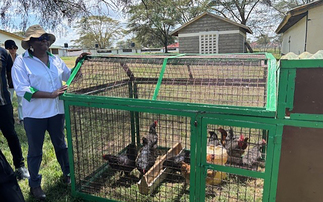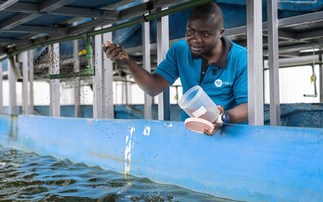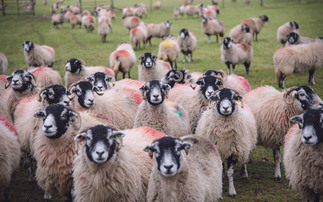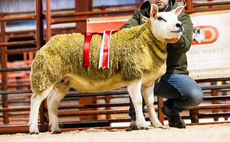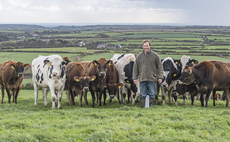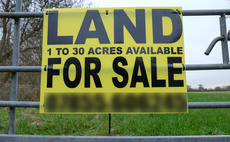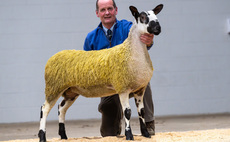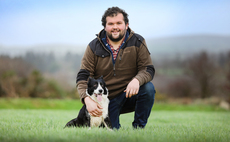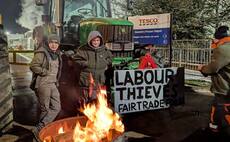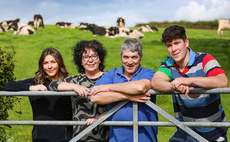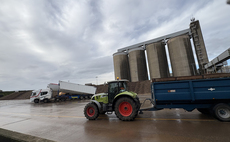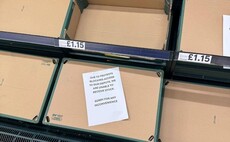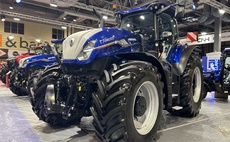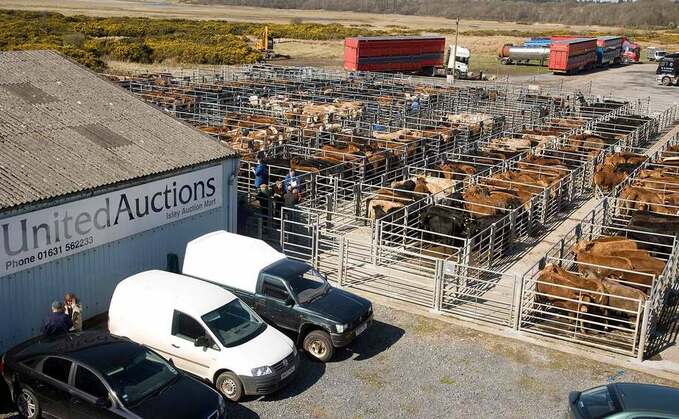
In the latest of feature of our series supported by the Livestock Auctioneers Association and Shearwell Data, we look at the importance of the Scottish island's auction marts.
Very few livestock auctioneers can take as keen an interest in the weather forecast as Donald Morrison. A director of United Auctions with responsibility for the company's island markets, he has to work round the vagaries of the North Atlantic weather as well as coping with all the other factors of organising sales.
In the last week of October, he was in the midst of re-organising a cancelled store cattle sale on Tiree and says: "I could see a storm coming in for the Saturday of the sale and I had to make decision to postpone for a week.
"It looks like it was the right call the way the forecast is looking, but it is not one that can be left to the last minute with vendors, buyers and hauliers all to be advised at least three days in advance. The last thing we want is mainland hauliers stuck on the island for days because the ferries are not running."
Fortunately, Mr Morrison, from a South Uist crofting family, has a lifetime of experience to call on. With 47 years of service with United Auctions, he is now the company's longest serving member of staff and manages the marts at Oban and Dalmally on the mainland and the island sites in Islay, Tiree and Lochboisdale on South Uist.
He says: "Fortunately, I have good sea legs because I spend a lot of time on ferries. We have three sales every week in the autumn, including a weekly sale at Oban. One of the highlights of the year is the Blackface ram sale at Dalmally. It operates over a huge catchment area and sees some very competitive bidding."
This year, however, the renowned ram lamb Dalmally event, which saw a record £200,000 paid for a ram lamb, was held at the UA's much larger site at Stirling to allow for the regulation social distancing. Otherwise the workload carries on for Mr Morrison, his yardsman at Oban, his two other part-time members of staff and the farmers and crofters who help on local sale days.
He says: "All these people are invaluable and we also have a good succession plan in place using young auctioneers from the wider UA team. Peter Wood is lead auctioneer at Dalmally, Raymond Kennedy at Oban and Ross Fotheringham at Islay. They are the faces of the future and their involvement gives me a lot of confidence in the continuation of the markets.
"These markets are absolutely vital to the rural economy. I remain absolutely convinced that there is no better opportunity for farmers to market livestock than on their own doorstep."
The market at Bridgend on Islay is the largest of the island markets. Whereas the markets on Tiree and Uist are operated by United Auctions on community owned sites, the Islay site is owned by the company.
Throughput, predominantly of store stock, amounts to 4,000 cattle and 18,000 sheep annually. Unlike many of the Inner Hebridean islands, of which Islay is the furthest south, it is made up mostly of tenanted farms rather than crofts.
"Its reputation for producing clean healthy stock direct from the farm on which it was produced attracts buyers from all over the country. We have one buyer from Oswestry in Wales who never misses a sale and others who come regularly from Central Scotland and Aberdeenshire, "says Mr Morrison.
It might seem that co-ordinating haulage from the island markets would be difficult but United Auctions gets round the potential problems by organising it themselves. The ferry journey from Kennacraig on the Kintyre peninsula to either Port Ellen or Port Askaig on Islay takes two hours at a fare of £750 return, so the last thing anyone would want would be a needless journey or a part-load. Mr Morrison works hard to match the number of lorries needed to the size of the sale and uses his many years of experience to order from hauliers in the areas he expects the buyers to come from.
On top of the ferry fare it costs around £1,500 to hire an articulated multi-deck lorry for the Islay run, but if Mr Morrison can make sure it is filled to regulation capacity the cost can be kept down to £3.50 to £4 per lamb or around £35 per animal for cattle.
For many years most of the cattle on offer were continental sired out of Limousin cross cows, but recently Mr Morrison has noticed a greater Aberdeen-Angus and Shorthorn influence with the cows, although still Limousin influenced, becoming milkier.
Mr Morrison said: "Forty years ago every available corner of Islay was stocked to capacity and even now, people are sticking with farming. But I would like to see a better succession on the tenanted farms so that when older farmers retire the farms were let out to keen young people.
"If that was the case it would mirror United Auctions own policy of bringing on young auctioneers and help keep the rural economy fresh."
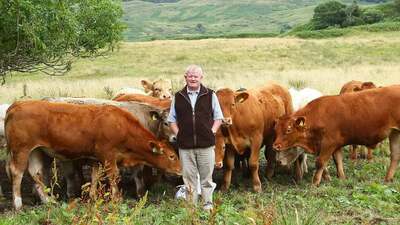
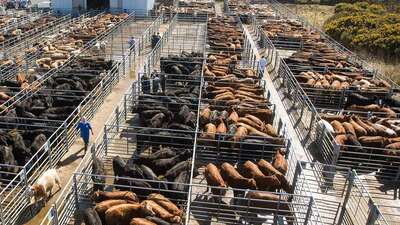
Meeting buyer's needs
Doug Davidson, Sinsharnie Farm, Huntly, Aberdeenshire, has been a regular buyer from Islay for 35 years and reckons the quality available through the mart outweighs the transport cost. Finishing 600 cattle per year, he buys in the spring and autumn looking for Charolais or Limousin cross bullocks and heifers in the 300kg to 380 kg weight range for finishing for Woodhead Bros at 700kg liveweight.
He says: "I look for top class growthy cattle from the Islay and Tiree sales. I know the sellers who produce the kind of cattle I want."
The vendor's perspective
From the vendor's perspective the convenience of a local market is very important. Long -time Islay consignor, Donald McCormick, at Blackrock is only two miles from the market and used to drive cattle and sheep there on foot.
He says: "The nearest alternative market would be Stirling, but that would involve a two-hour ferry journey and then another three hours by road. Selling locally involves a lot less stress for the stock and saves me a lot of time.
"We always seem to have plenty of buyers and if they cannot come themselves Donald Morrison can buy for them."
Mr McCormick runs 75 suckler cows mostly Limousin and British Blue crosses long with 150 Beltex and Texel cross ewes.
He says: "Islay is not really suited to finishing stock. It is far better for us to sell store and use the grass to keep breeding stock numbers up."
Fellow Islay famer, Colin McMillan, Tarrant, has 200 cows, mostly spring calving Limousin and Aberdeen-Angus crosses. He sells yearling calves weighing 350 to 370 kg liveweight.
He agrees in the need for a local market and says: "The cattle look their best and buyers can see the land they have been produced on. There is also the opportunity to take the cattle home again if the price is not right on the day. If I took them to a mainland market that could not be done."









